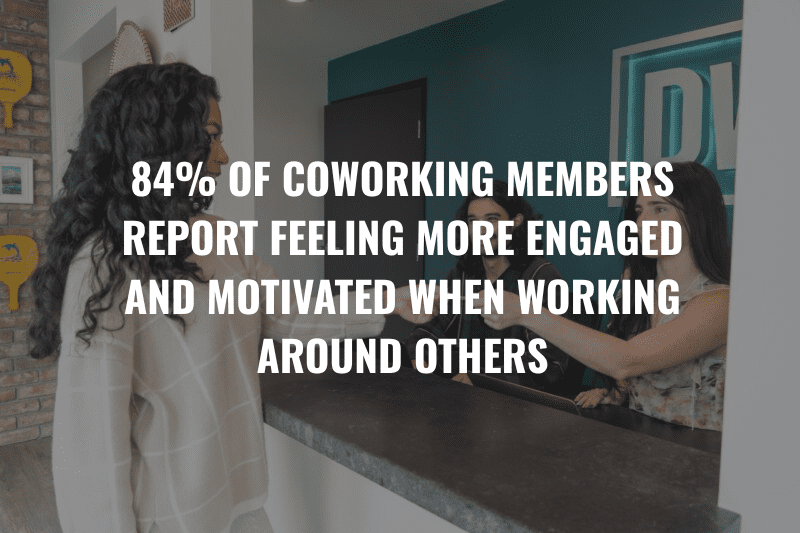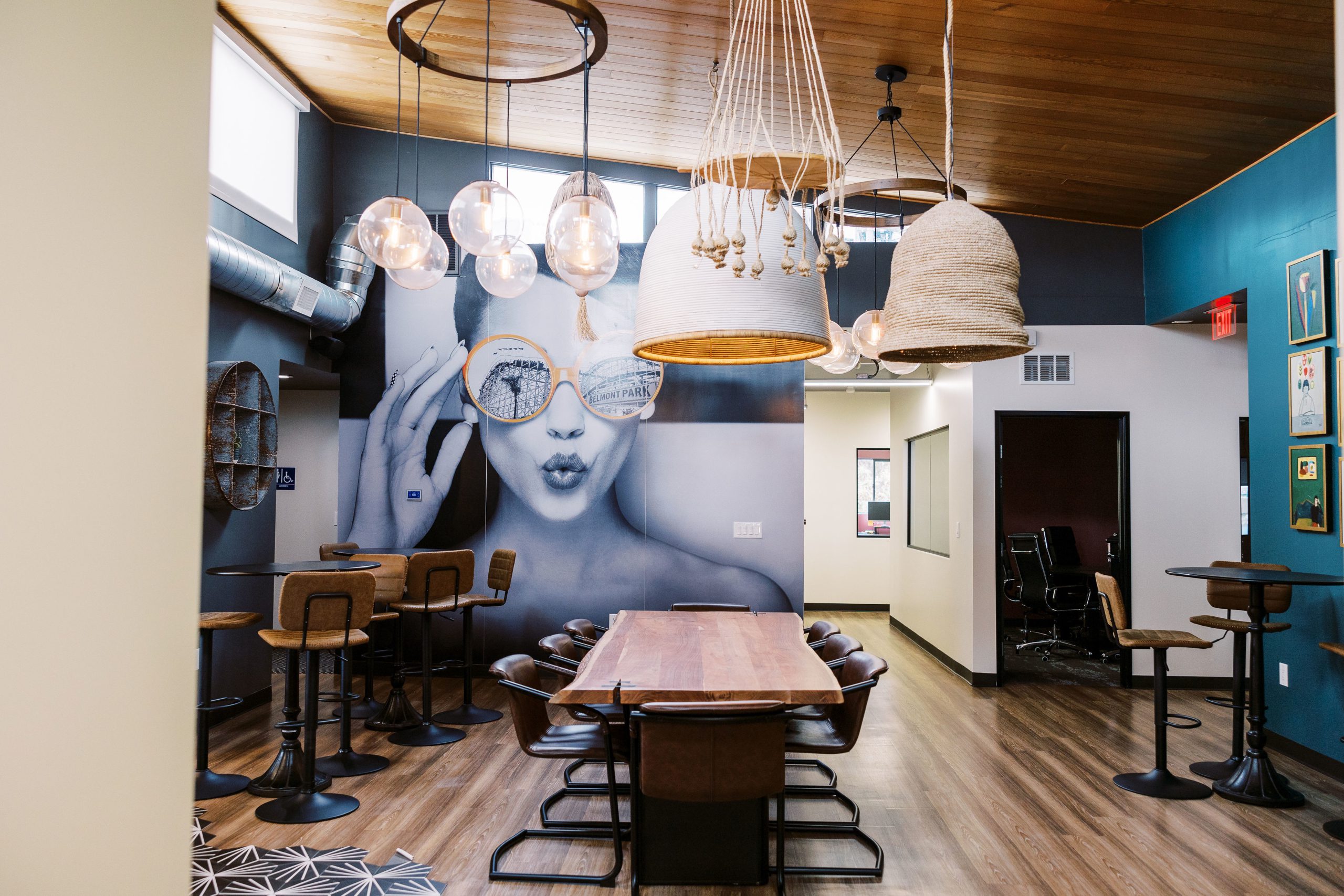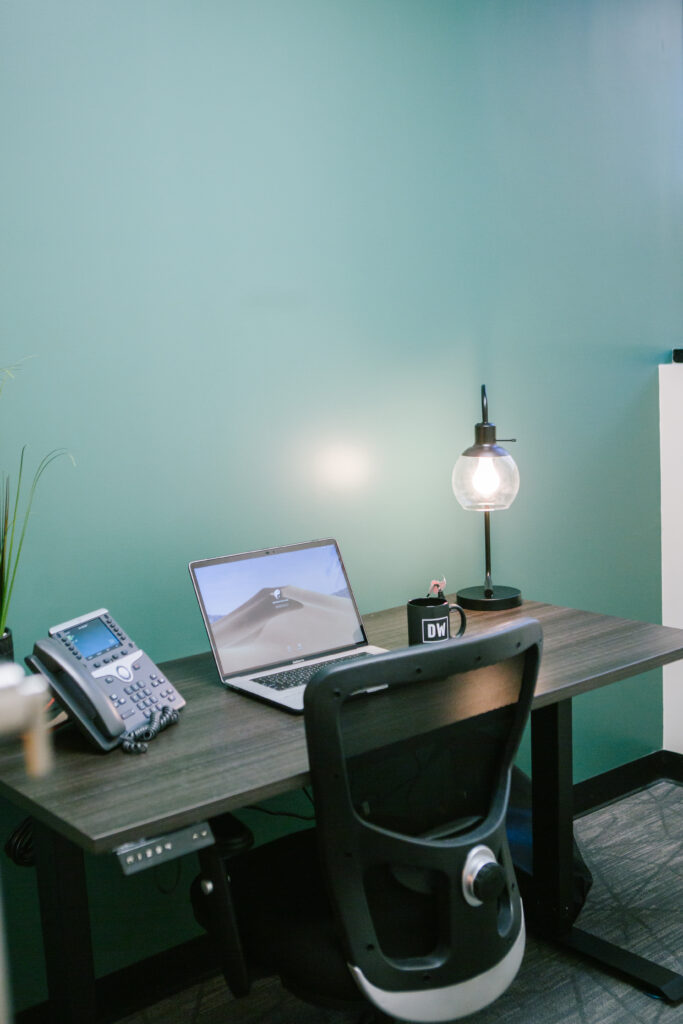What’s in this article?
- Traditional office leases often come with hidden costs like buildouts, utilities, and maintenance fees.
- Coworking spaces offer all-inclusive pricing, move-in-ready setups, and flexible terms.
- Flexibility can protect businesses from long-term financial risks (especially during periods of growth or change).
- Access to a built-in professional community boosts productivity, happiness, and networking opportunities.
- We built a free calculator to help you easily compare your real costs side-by-side.

When you’re planning where to grow your business—or where to set up your team—cost is always a major factor. But comparing a traditional office lease to coworking space costs isn’t as straightforward as it might seem.
It’s not just about rent versus membership fees. It’s also about the hidden expenses (and savings) that can have a huge impact on your bottom line.
So, how do you make an informed decision? It starts by knowing what to actually compare.
Hidden Costs of Traditional Office Leases (That Add Up Fast)
It’s easy to underestimate the true cost of a commercial lease because many fees aren’t obvious upfront – not to mention downtime during setup, project management time, and upfront deposits. Below is what research shows.
Buildout Costs
According to a 2022 CBRE report, the average office buildout cost reached $196 per square foot nationally—higher in urban markets. For a 2,000-square-foot office, that’s nearly $400,000 just to get the space move-in ready.
Operating Expenses
The BOMA 2023 Office Experience Exchange Report found that U.S. office tenants pay an average of $11.50–$13.50 per square foot annually in operating expenses alone (maintenance, security, utilities).
Furniture and IT Setup
Separate estimates from Gensler suggest that furnishing and equipping a traditional office—including desks, chairs, technology infrastructure, and collaborative spaces—costs an additional $5,000–$10,000 per employee.
Coworking Offers More Flexibility (And That Saves Money, Too)
Another big difference? Flexibility.
Traditional leases often lock you into 3–5 year contracts with little ability to scale up or down without major penalties.
Coworking memberships offer month-to-month flexibility, helping you adapt as your team (or your budget) changes.
In fact, 60% of businesses now prioritize flexible workspace options for exactly this reason, according to Instant Offices’ 2023 report.
The Real Bottom Line
Save money and streamline operations! When comparing coworking and traditional leases, it’s important to look beyond just rent. Enjoy financial stability with one predictable monthly fee that helps avoid unexpected costs. Our model also reduces capital expenditures, offering advantages over traditional leases
Downtown Works
One Price, No Frills.
- Lower Commitment
- No Upfront Costs
- Move In Ready
- All Inclusive
- Collaboration Spaces, Common Area & More!
Traditional Lease
Variable Costs, Multiple Vendors
- Longer Commitment (3 Year Average)
- Large Initial Investment in CapEx
- Project Management
- Lag Between Signing and Move In
- Utilities
- Internet
- FF&E
- Maintenance
- Cleaning
- Coffee, Snacks, Etc,
Network Effects: The Bonus Most People Don’t Quantify
It’s hard to put a dollar amount on community—but it matters.
Having access to a vibrant professional network, casual collaboration opportunities, and a social (but focused) work environment isn’t just a perk—it’s a productivity booster.
In fact, 84% of coworking members report feeling more engaged and motivated when working around others. Connections made in shared spaces often lead to new clients, helpful feedback, or just the kind of everyday support you can’t get working solo.
If you’re curious about the science behind how community fuels better work, we covered it in more detail [here]

Want a Smarter Way to Compare?
Because these variables can get complicated fast, we built a free Cost Savings Calculator to do the hard work for you.
In just a few minutes, you can see an apples-to-apples comparison based on your team size, space needs, and goals.
Whether you choose Downtown Works or another workspace, it’s a smart way to make a more informed decision.
Want a Smarter Way to Compare?
Finding the right workspace isn’t just about where you sit—it’s about setting up your business for success.
Understanding the full picture today helps you save money, avoid costly surprises later, and stay flexible as you grow.
And if we can make that decision a little easier? We’re happy to help.


